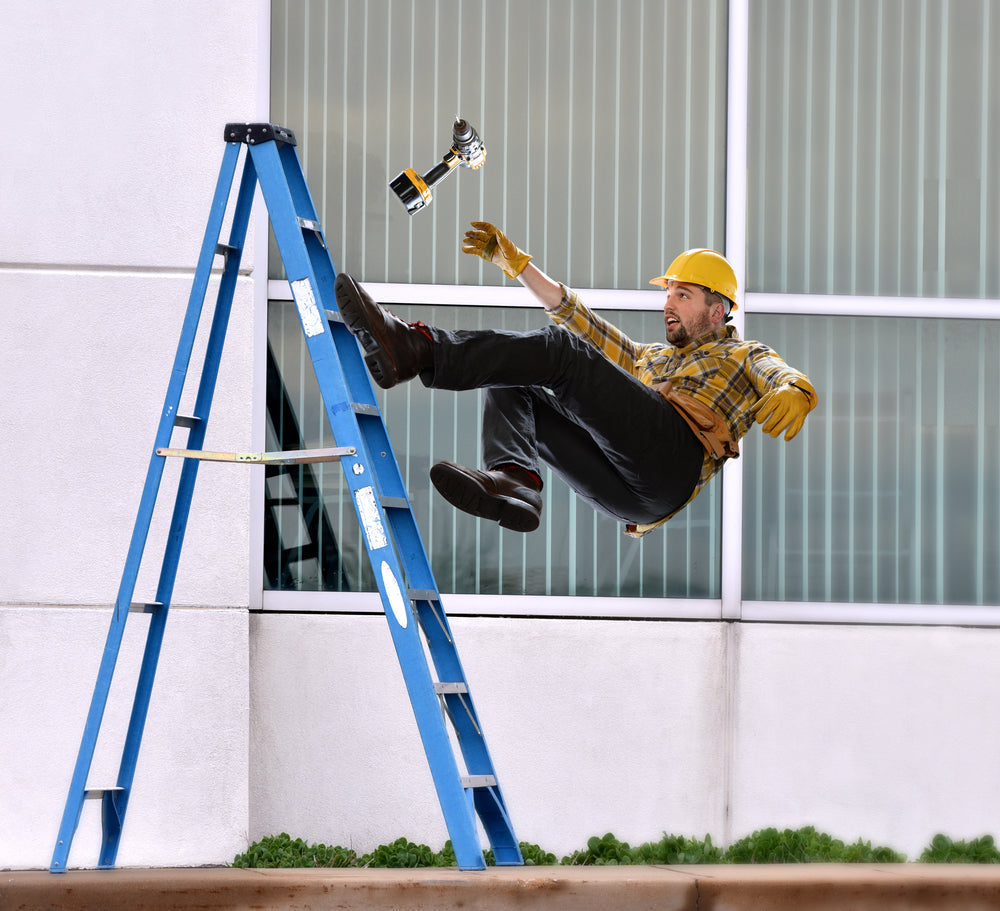Slips, trips, and falls are among the most common and preventable causes of workplace injuries. From a wet floor in a warehouse to poor hallway lighting, it only takes one missed hazard to put your team at risk and expose your business to serious liability.
According to the Bureau of Labor Statistics, slips, trips, and falls accounted for over 20% of all nonfatal workplace injuries, making them one of the leading causes of job-related incidents. Prevention through training isn’t just smart—it’s required.
In this post, we’ll break down OSHA slips, trips, and falls standards, explain how fall protection training reduces workplace risks, and show how National Safety Compliance can help you stay ahead of compliance with easy, affordable safety training videos!
Why Slips, Trips & Falls Training Matters
OSHA holds employers accountable for maintaining a workplace free of known hazards, and that includes preventing fall-related accidents. These incidents can lead to:
-
Sprains, fractures, and back injuries
-
Lost productivity and missed workdays
-
Expensive workers’ compensation claims
-
OSHA citations or fines
-
Long-term liability for your business
Even small oversights, such as failing to clean up a spill or mark a slippery entryway, can lead to major consequences. That’s why workplace injury prevention starts with proper training.
The Most Common Causes of Slips, Trips, & Falls
Not every workplace hazard is easy to spot, and the ones that seem small are often the ones that cause the most injuries. Here are some of the most common culprits behind slips, trips, and falls:
-
Wet or oily floors (especially near entrances or machinery)
-
Uneven flooring, torn mats, or loose tiles
-
Cords and clutter across walkways
-
Poor lighting in work areas, staircases, or storage rooms
-
Unsafe ladder use or unstable climbing surfaces
-
Wearing shoes that aren’t slip-resistant or appropriate for the job
To understand OSHA’s full expectations, see the official Walking-Working Surfaces Standard (29 CFR 1910 Subpart D). This outlines employer responsibilities for keeping walking surfaces hazard-free.

What Employers Need to Do to Stay OSHA-Compliant
If slips, trips, or falls are possible at your worksite (and they usually are), here’s what OSHA expects from you:
-
Identify hazards: Regularly inspect your workplace for potential risk areas, such as wet floors, clutter, low lighting, and loose mats.
-
Train employees: Provide job-specific fall protection training to enable workers to recognize and avoid these hazards.
-
Keep it clean: Maintain a regular housekeeping routine to keep walkways safe and clear.
-
Provide the right gear: Slip-resistant footwear and PPE may be required.
-
Document everything: Keep accurate records of safety training and hazard mitigation efforts.
What Should Slips, Trips & Falls Training Cover?
Effective training helps employees recognize hazards, follow safety protocols, and respond appropriately to incidents. NSC’s Slips, Trips, & Falls Training video kit covers topics like:
-
Types of falls (same-level vs. elevated)
-
Identifying and avoiding slips, trips, and unstable surfaces
-
Walking safely on wet or uneven surfaces
-
How to prevent injuries from falling objects
This training is available in English and Spanish and is offered via digital streaming, USB, and DVD, allowing you to train your team in the way that works best for you!

Tips for Creating a Safer Workplace
Training is just the beginning. To prevent slips, trips, and falls, safety must be part of your everyday routine. Here’s how to make it stick:
-
Lead by example: When supervisors follow safety practices, employees do too
-
Use signage and labels: Display signs and mark slick surfaces
-
Report and correct hazards quickly: Encourage employees to speak up
-
Conduct routine walkthroughs: Inspect floors, stairwells, and storage areas
-
Document what you find: Keep track of any safety improvements or corrections
-
Use training as an ongoing tool: Don’t treat it as a one-time event
Frequently Asked Questions
Q: Does OSHA require slips, trips, and falls training?
A: Yes! OSHA requires employers to prevent known hazards, such as wet floors, cluttered aisles, and unstable ladders. Training is a vital part of that responsibility.
Q: How often should employees complete fall prevention training?
A: At least once a year—or whenever new equipment, job duties, or hazards are introduced.
Q: Is this training only required for high-risk jobs?
A: Not at all. Slip and trip hazards exist in every environment, from warehouses to offices. If there’s a risk, OSHA expects training.
Q: What’s the most cost-effective way to train my team?
A: NSC’s All Access Pass gives you unlimited access to our OSHA training library—perfect for teams that need flexibility and cost savings!
Need Help with Fall Protection Training?
Whether you're managing a warehouse, clinic, or construction site, preventing slips, trips, and falls should be a top priority. National Safety Compliance makes it easy with:
-
Instant access to safety training for manufacturing, construction, healthcare, and more
-
Ready-to-use training kits with videos, quizzes, guides, and completion certificates
-
A cost-saving All Access Pass for unlimited access to OSHA safety training all year

Take the Guesswork Out of Safety Training
National Safety Compliance is here to help you protect your team, train smarter, and stay prepared for inspections. Your employees deserve to feel safe, and you deserve the peace of mind that comes with knowing you're fully compliant!

